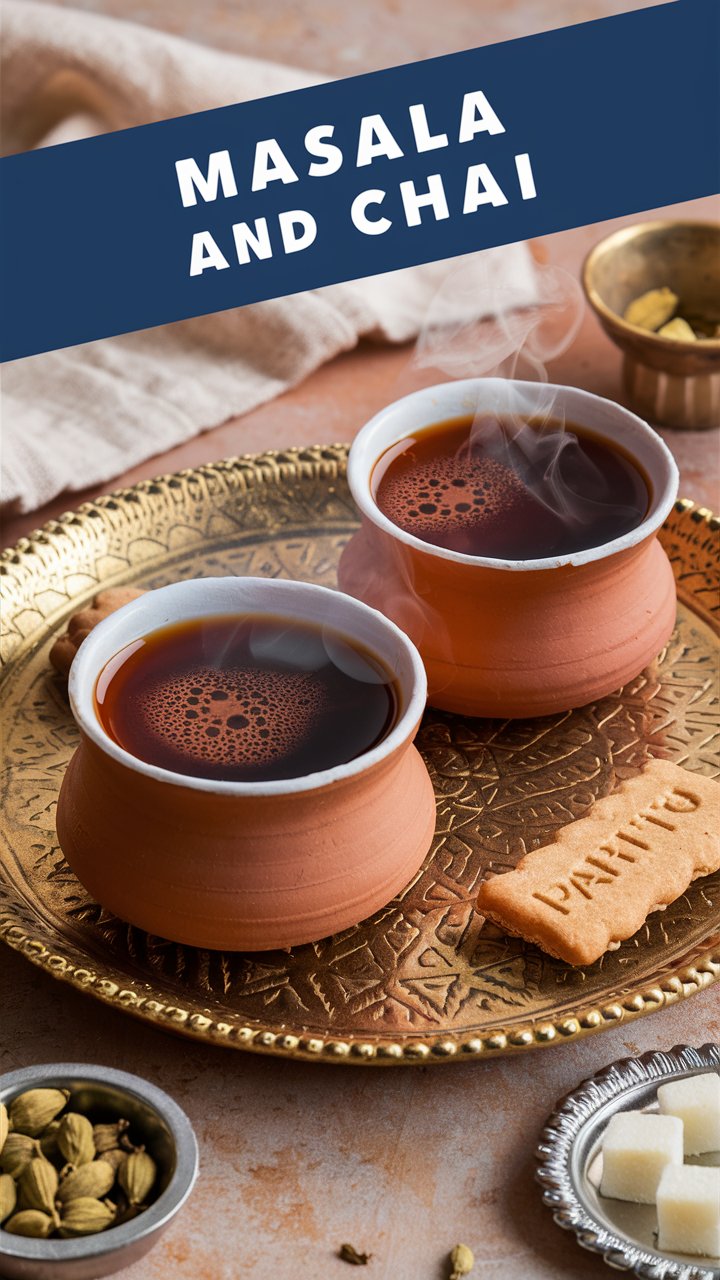Masala Chai is more than just tea. It is a cultural symbol, a comfort beverage, and a flavorful fusion of spices that resonates deeply in homes and hearts across India and beyond. This aromatic blend of black tea, warm spices, milk, and sweetener creates an invigorating experience that transcends generations.
In this complete guide, we will explore the origin, health benefits, ingredients, and step-by-step preparation of Masala Chai. You’ll also learn how to customize it to suit your taste, create your own spice blends, and even turn it into an iced or dairy-free version. Let’s dive deep into the flavorful world of Masala Chai.
What is Masala Chai?
“Masala Chai” translates literally to “Spiced Tea” (masala = spice blend, chai = tea). This Indian beverage combines strong black tea with a medley of spices and creamy milk, sweetened to taste. Traditionally served piping hot in small cups or clay kulhads at roadside tea stalls (“tapris”), it has now become a globally loved drink.
Each family and region in India has its own way of making Masala Chai, reflecting personal preferences and local ingredients. Some may prefer it fiery with black pepper, others sweet and mellow with cinnamon and fennel.
The Origins of Masala Chai
Masala Chai has roots in ancient Ayurvedic traditions. Originally a healing tonic made with herbs and spices, it was caffeine-free and used to promote digestion, reduce inflammation, and enhance circulation. With the British introduction of black tea cultivation in India in the 19th century, the spiced herbal blend merged with tea, evolving into the Masala Chai we know today.
Health Benefits of Masala Chai
Masala Chai is not only flavorful but also rich in health-boosting ingredients:
- Cardamom: Supports digestion and detoxification.
- Ginger: Anti-inflammatory and aids in digestion.
- Cinnamon: Helps balance blood sugar and adds sweetness naturally.
- Cloves: Rich in antioxidants and known for antibacterial properties.
- Black Pepper: Boosts metabolism and nutrient absorption.
- Black Tea: Contains antioxidants that support heart health and energy levels.
Combined, these ingredients create a beverage that is warming, energizing, and beneficial to overall wellness.
Ingredients You’ll Need
For the Chai Base:
- 1 cup water
- 1 cup whole milk (or oat/almond milk for dairy-free)
- 2 teaspoons loose-leaf black tea (Assam or Darjeeling recommended)
Traditional Masala Spice Blend:
- 4–5 green cardamom pods (lightly crushed)
- 1 small cinnamon stick
- 2–3 whole cloves
- 1-inch fresh ginger (sliced thin)
- 2–3 black peppercorns (optional)
- 1/2 teaspoon fennel seeds (optional)
For Sweetening:
- 1–2 teaspoons sugar (or to taste)
- Honey or jaggery (as natural alternatives)
You can also add nutmeg, star anise, or vanilla for a personal twist.
How to Make Masala Chai (Step-by-Step)
Step 1: Prepare Your Spices
Crush the cardamom pods and slice fresh ginger thinly. Pre-measured spice blends can also be stored for convenience.
Step 2: Boil Water and Spices
In a saucepan, combine water with all the spices. Bring to a boil, then simmer for 4–5 minutes so the spices infuse properly.
Step 3: Add Tea Leaves
Add the black tea and allow it to steep for 3–4 minutes. The longer it steeps, the stronger the flavor.
Step 4: Add Milk and Sweetener
Pour in the milk and sweetener. Simmer gently while stirring. Watch carefully so it doesn’t overflow.
Step 5: Strain and Serve
Use a fine mesh strainer to pour the tea into cups. Serve hot and fresh.
Tips for the Perfect Cup
- Use fresh spices for the most aromatic results.
- Avoid overboiling milk—gentle simmering brings out creaminess.
- Customize spice ratios to your preference.
- Store homemade spice mix in an airtight jar for quicker brewing.
- Pair with snacks like biscuits, pakoras, or samosas for an authentic experience.
Masala Chai Variations
1. Iced Masala Chai
Prepare as usual, cool, then serve over ice with a splash of milk.
2. Vegan Masala Chai
Substitute dairy milk with oat, almond, or soy milk.
3. Chai Latte Style
Froth the milk for a café-style finish.
4. Sugar-Free Chai
Skip sugar entirely or use stevia for a low-carb option.
Frequently Asked Questions (FAQs)
1. Can I use tea bags instead of loose-leaf tea? Yes, but choose high-quality ones. Loose-leaf tea gives better flavor and strength.
2. Can I store leftover chai? Store in the refrigerator for up to 2 days. Reheat gently and add milk if needed.
3. Can I use ground spices? Yes, but start with small amounts (1/4 tsp each) as ground spices are more potent.
4. What is the best time to drink Masala Chai? Morning or afternoon. It provides a gentle caffeine boost and warms the body.
5. Is Masala Chai caffeine-free? No, unless you use herbal tea instead of black tea.
6. Can I pre-make the spice mix? Absolutely. Store it in a sealed container for up to 2 months.
7. Can I make it without milk? You can make black spiced tea by omitting the milk altogether.
Nutritional Information (Per Serving Estimate)
- Calories: 90–120 kcal (depending on milk and sweetener)
- Protein: 2–4g
- Carbs: 10–14g
- Sugar: 5–10g
- Fat: 3–5g
Cultural Significance of Masala Chai
Masala Chai is not just a drink in Indian households—it is an emotion, a ritual, a symbol of hospitality. It’s the beverage served during deep conversations, rainy afternoons, and festive mornings. Sharing chai is sharing warmth.
In Indian markets, trains, homes, and cafes, the call of the chaiwala (tea vendor) is a daily melody. This humble beverage connects people across regions, generations, and classes.
Final Thoughts: Make It Yours
Whether you like it milky, spicy, sweet, or light—Masala Chai is infinitely customizable. Explore, experiment, and make it part of your routine. Once you taste a perfectly brewed cup, you’ll understand why it’s cherished around the world.

